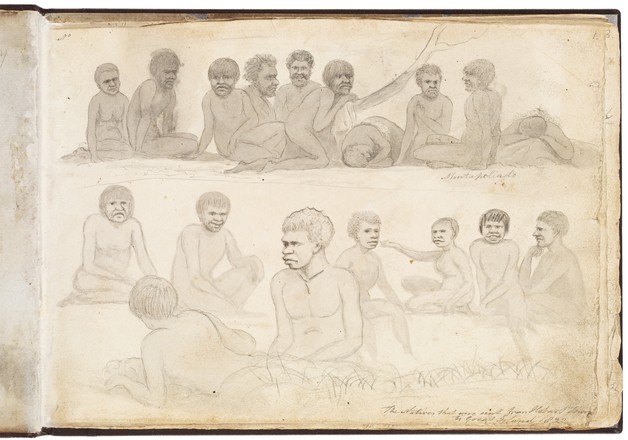
The natives that were sent from Hobart Town to Great Island 1832
1832
Pencil, pen, ink and wash drawings on wove paper
Bequest of Sir William Dixson, 1952
DL PX 46
Pencil, pen, ink and wash drawings on wove paper
Bequest of Sir William Dixson, 1952
DL PX 46
In 1831 the highly successful English landscape artist John Glover emigrated to Tasmania (then Van Diemen’s Land) to join his two sons already living there. Arriving on his 64th birthday, he looked forward to a ‘new beautiful World – new landscapes, new trees and new flowers, new Animals, Birds, etc. etc. is delightful to me’ [1]. Yet he also arrived at a time when the conflict between Aboriginal Tasmanians and the colonists was at its height.
John Glover has been described as a charming man of excellent spirits: cheerful, mischievous, eccentric, even-tempered, gregarious, energetic and adventurous. Glover appears to have been eager to make contact with the Palawa, the Tasmanian Aboriginal people. He made efforts to learn and record the names of those he met, and in his paintings he depicts them as peaceful, happy people: a catalogue note to one of his Corroboree pictures comments: ‘one seldom sees such gaiety in a Ball Room, as amongst these untaught Savages’ [2].


 Back to list
Back to list